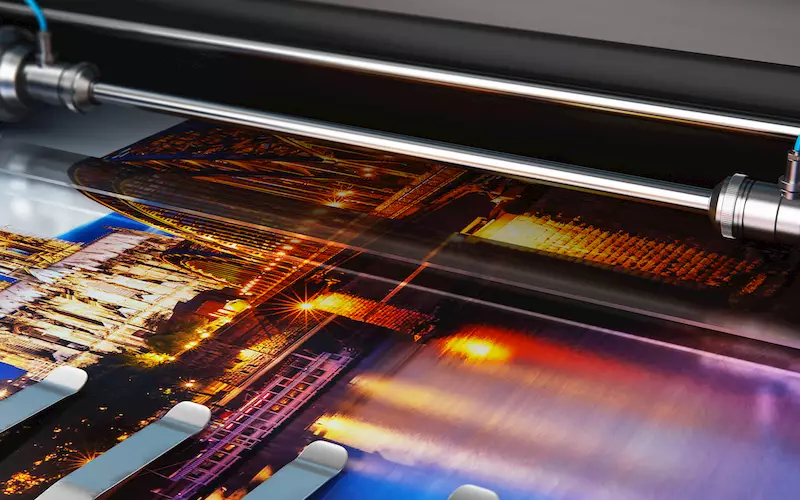Digital print volumes to rise by 2.91 trillion A4 prints
The Smithers report identifies growth segments and technologies for USD 136.7 billion digital printing market across the next decade.
11 May 2022 | By Aultrin Vijay
Inkjet and electrophotography (toner) systems are continuing to redefine the market for publication, commercial, advertising, packaging and label print through to 2032.
“The experience of the Covid-19 pandemic has emphasised the advantage of the versatility of digital print to multiple segments, and its market continues to grow,” the report stated.
Exclusive data from a Smithers study – The Future of Digital Printing to 2032 – shows that in 2022 this market will be worth USD 136.7 billion. Demand for these technologies will remain strong with value increasing at a 5.7% compound annual growth rate (CAGR) to 2027, then at 5.0% for 2027-2032; yielding a market value of USD 230.5 billion in 2032.
“Simultaneously, extra revenues will flow from sales of inks, toners, new equipment sales, and post-purchase support services. Combined these will be worth USD 30.7 billion in 2022 and increase to USD 46.1 billion to in 2032,” a press note shared with PrintWeek stated.
Print volumes on digital will rise over the same period from 1.66 trillion A4 prints (2022) to 2.91 trillion (2032), equivalent to 4.7% CAGR.
As analogue print continues to face down some fundamental challenges, the post-Covid landscape will actively favour digital, as run lengths decrease further, print ordering moves online, and customisation and personalisation become more commonplace.
“Simultaneously digital print OEMs will reap the benefits from R&D that improves the print quality and versatility of their machines,” it stated.
Over the 10-year period Smithers forecasts that a market for digital cut sheet and web presses will blossom, via the addition of more in-line finishing and higher throughput machines – ultimately able to print more that 20 million A4 prints per month.
Colour gamuts is also set to increase, with fifth or sixth colour stations offering print embellishment options, such as metallic print or spot varnishes, as standard
Additionally, inkjet resolution will see a major improvement with the market poised to welcome 3,000 dpi printheads that can run at 300m/min by 2032. Furthermore, sustainability concerns will see aqueous solutions gradually replace solvent-based inks; with pigment-based formulations replacing dye-based inks, initially in graphics and packaging, accompanied by a fall in costs
“The sector will also benefit from wider availability of paper and board substrates optimised for digital production, new inks and surface coatings will allow inkjet to match the quality of offset with only a minor premium,” the report found. “Such innovations will help inkjet further displace toner as the preferred digital platform.”
Toner presses are said to become more restricted in their core segments – commercial print, advertising, labels and photobooks – while seeing some growth in high-end folding cartons and flexible packaging. In the short term, the toner segment will be buoyed by the introduction of HP Indigo’s multi-engine LEPx technology, however.
According to the report, the most lucrative print market for digital will be in packaging, commercial print, and book printing. In packaging the proliferation of digital with dedicated presses selling into corrugated and folding cartons, will be supplemented by greater use of narrow-web presses to print flexible packaging.
“This will be the fastest growing of all segments, more than quadrupling between 2022 and 2032. Growth will be slower in labels, a segment that has pioneered digital use, and consequently has achieved a degree of maturity,” the report mentioned.
In commercial work, the market will benefit from the arrival of format sheetfed machines that are now routinely used alongside offset litho or smaller format digital presses, with digital finishing and embellishment systems adding value.
In book print, integration with online ordering and the capacity to produce shorter runs to order is set to make this the second fastest growing application through to 2032. In this segment inkjet will increasingly dominate, due to its superior economics when single-pass web machines are linked to suitable finishing lines, printing colour output across a wide range of standard book substrates– delivering superior results on standard offset paper grades, and at faster speeds. There will be new revenue as sheetfed inkjet is adopted more widely to print book jackets and covers.
“Not all digital print segments will grow, with electrophotography print seeing the worst impact,” the report stated. “This is not linked to any distinct problem with the technology itself, but rather reflects overall declines in use of transaction mail and advertising print, and only sluggish growth in newspapers, photobooks and security applications over the next decade.”











 See All
See All